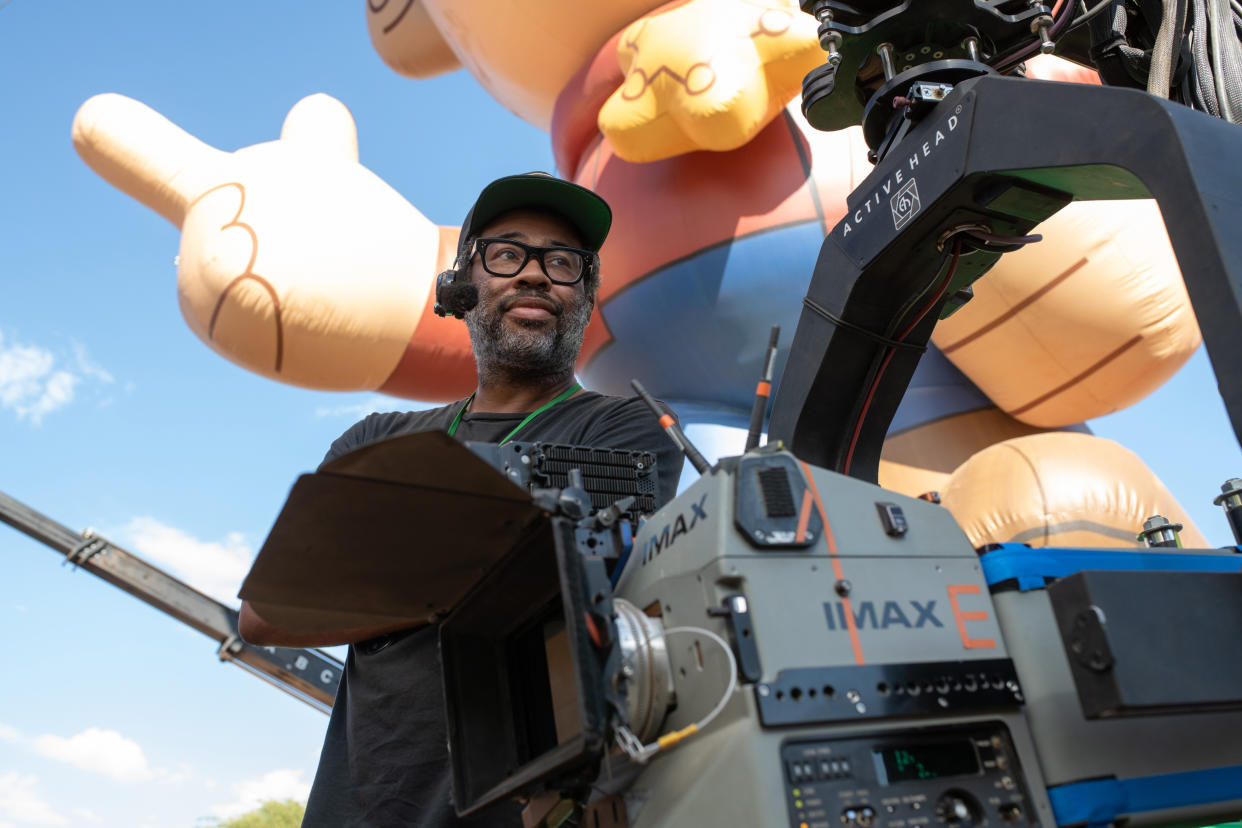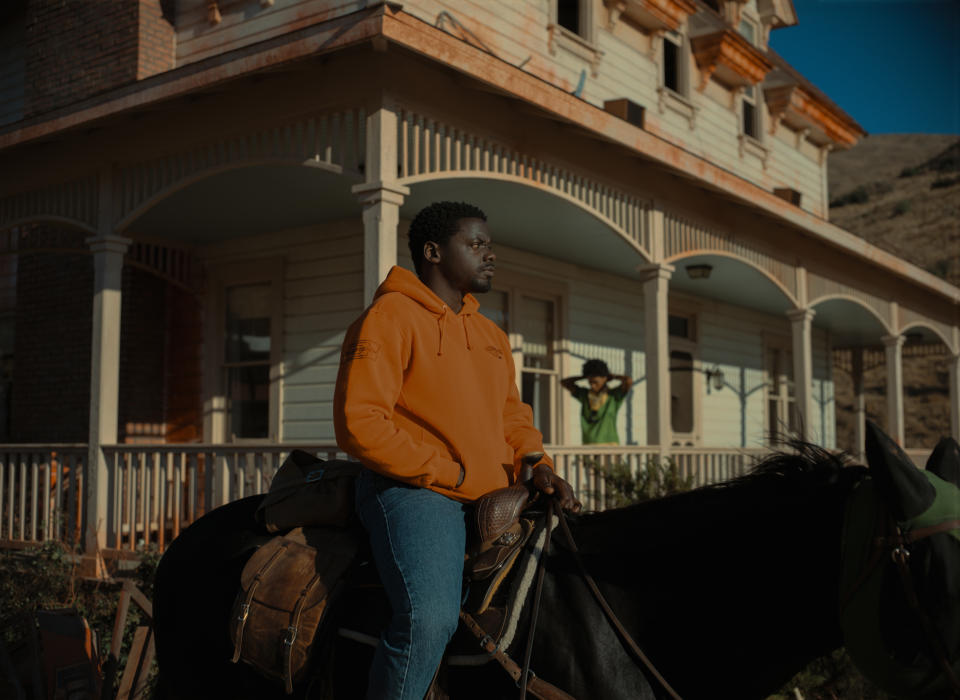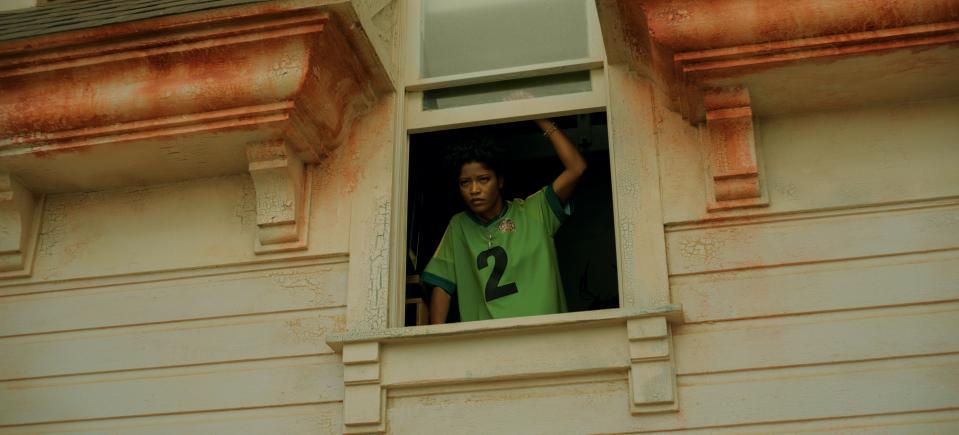‘Nope’: Shooting Jordan Peele’s IMAX-Sized Spectacle of Horror

- Oops!Something went wrong.Please try again later.
- Oops!Something went wrong.Please try again later.
- Oops!Something went wrong.Please try again later.
[Editor’s note: The following story contains spoilers for “Nope.”]
With “Nope,” horror director Jordan Peele (“Us,” “Get Out”) was ready to tackle an unconventional, big budget, UFO summer thriller. It’s a flipped-out “Close Encounters of the Third Kind,” starring Daniel Kaluuya and Keke Palmer as horse-trainer siblings who try to capture the existence of a flying saucer on film as the impossible “money shot.” Along the way, their journey is filled with bizarre terror and mayhem, which makes “Nope” a spectacle about spectacle: an ode to the theatrical experience, but, at the same time, a deep exploration of “our addiction to spectacle,” according to Peele.
More from IndieWire
So, naturally, the movie had to be shot with large format IMAX cameras for the immersive action (along with Panavision System 65 cameras for the rest, and Kodak supplying 65mm film for both). Peele found the perfect collaborator in Hoyte van Hoytema — Christopher Nolan’s go-to cinematographer — who has transformed IMAX into innovative spectacle with “Interstellar,” “Dunkirk,” “Tenet,” and the upcoming “Oppenheimer.”
“We already wanted to work with each other for a while, and, of course, when he started talking about this project, he really wanted to make something worthy for the big screen,” van Hoytema told IndieWire. “And make something that is satisfying in an experiential way, something more expansive, something bigger, and something more visceral than he’d done before. The script had all the eccentricities that Jordan is known for and there were a lot of visual challenges.”
While the subject of IMAX didn’t come up immediately, Peele let it be known to the cinematographer early on that he was interested in large format. “I said, ‘Look, Hoyte, we’re gonna go big and whatever we need to do this, I’m gonna fight for us to get it,'” Peele told IndieWire. “And his eyes lit up and we said, ‘Let’s go.’ And I said, ‘Look, first question: If you had to film a UFO for posterity, not for a movie… what would you use?’ And he said, ‘I would use an IMAX camera.’ Obviously he was right… it’s the highest resolution, but the format alone and the immersion that it brings is also very wonderful.”
To van Hoytema’s point about the necessity of capturing a UFO in IMAX for posterity, there’s even an IMAX camera in the movie (operated by cinematographer Antlers Holst, played by Michael Wincott). “It’s an IMAX Mk II with a hand crank that we built,” added van Hoytema. That’s a nod to the model used for the IMAX-produced space station documentaries in the ’80s, including the hugely popular “The Dream is Alive.”

Universal Pictures
After taking IMAX to new frontiers on “Dunkirk” and “Tenet” — going almost anywhere on the ground, in the air, underwater, and even running backward for the latter’s time-inversion technique — van Hoytema went even further on “Nope.” He took the bulky camera on his shoulder and on helicopters to achieve a unique sense of grandeur and mounting terror for the first horror film shot in IMAX.
There are 47 minutes of IMAX footage devoted primarily to the various alien attacks (shot in Agua Dulce near Santa Clarita). Each embraces the look and tone of a different genre, from sci-fi to horror to disaster to the Western, but filtered through the Black experience. “Nope” even traces the roots of Black cinema to the present by connecting Hollywood horse wranglers OJ (Kaluuya) and Emerald Haywood (Palmer) to the Black jockey who rides the horse in Eadweard Muybridge’s “Animal Locomotion” photographic experiment.
“This was very interesting to Jordan because he is very free [in the way he thinks],” van Hoytema said. “You almost think that he doesn’t care about genre too much. He just sort of rides from his gut and then lands on these different genres. There are many Easter eggs and parallels.” According to van Hoytema, nothing in “Nope” is coincidental — even the film’s strange motif of inflatable objects.

Universal Pictures
The IMAX sequences are very much anchor pieces, beginning with a bizarre opening at the Haywood ranch that’s an immediate attention grabber and has us wondering what it means. “Jordan is very good at the beginning of the journey,” added van Hoytema. “It’s a premonition of things to come and giving it a little weight.”
The visual style of each attack is memorable, particularly the horrific blood and rain that pour down on the Haywood house at night or the surreal storm of terror that descends upon Jupiter’s Claim, the Old West theme park run by Ricky “Jupe” Park (Steven Yeun) that’s since been reconstructed as part of the Universal Studios backlot tour.
“It’s important to show a new experience,” van Hoytema said. “So it was clear that we wanted them to progress, or we wanted them to feel different, or the perspective to be different, or we wanted an escalation. Some things are much better experienced as one-shot and other scenes are much better experienced as suspense-driven or shocking.”
And nothing’s more shocking than the sudden rampage that occurs during the shooting of a ’90s sitcom, starring lovable chimp Gordy. The key to the Hitchcockian sequence is the voyeuristic camera that surveys the mayhem and then lands on the POV of a frightened kid, who suddenly revels in the spectacle. “That, for me, was a very visceral moment,” van Hoytema said. “If you had been there, you would’ve understood how it felt and what it meant. And that was very much a no-brainer for us to shoot in IMAX.”
Additional reporting by Chris O’Falt.
Best of IndieWire
New Movies: Release Calendar for July 22, Plus Where to Watch the Latest Films
From 'Barbie' to 'Babylon,' Here's Everything Margot Robbie Has in the Works
Sign up for Indiewire's Newsletter. For the latest news, follow us on Facebook, Twitter, and Instagram.


